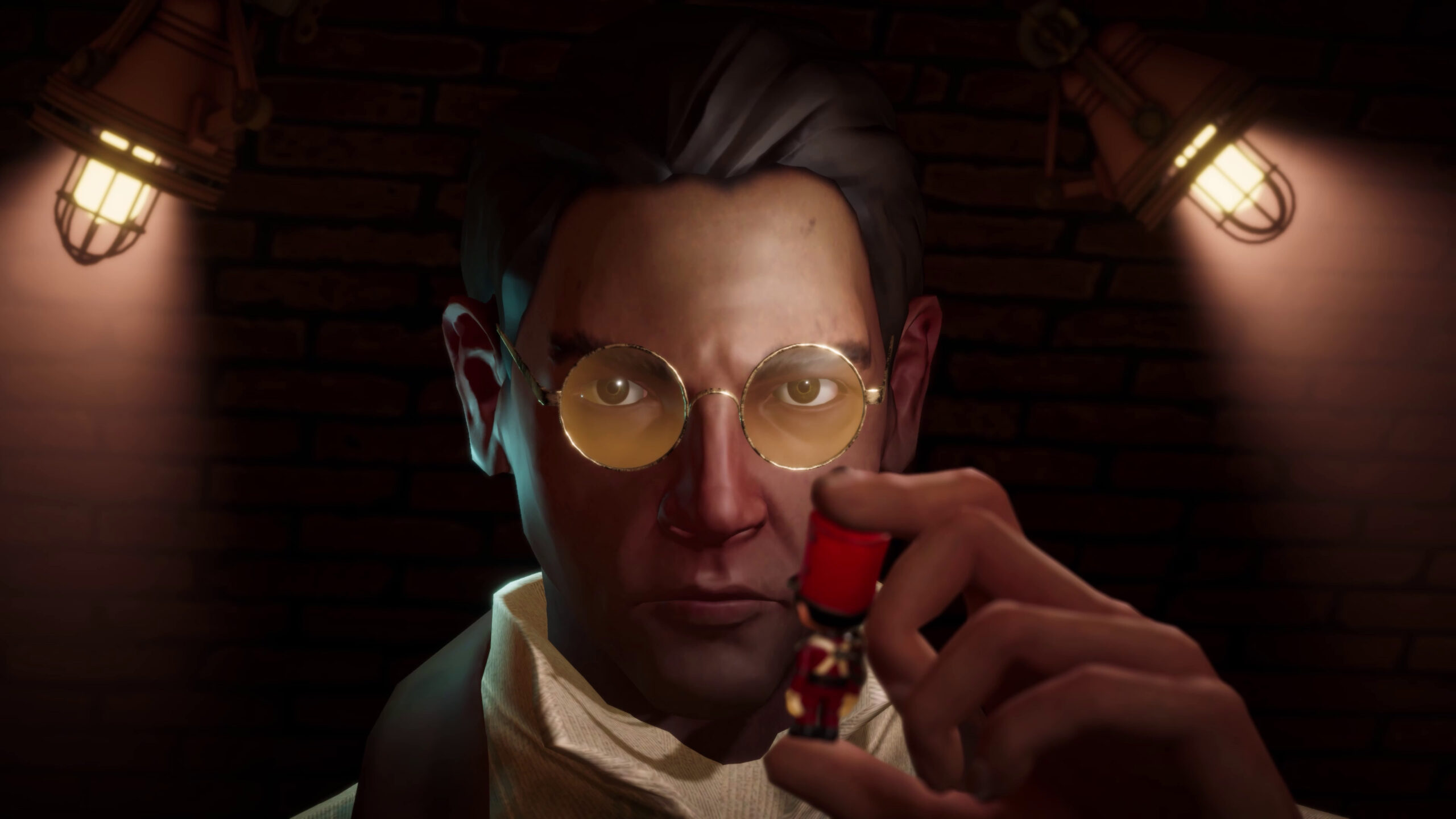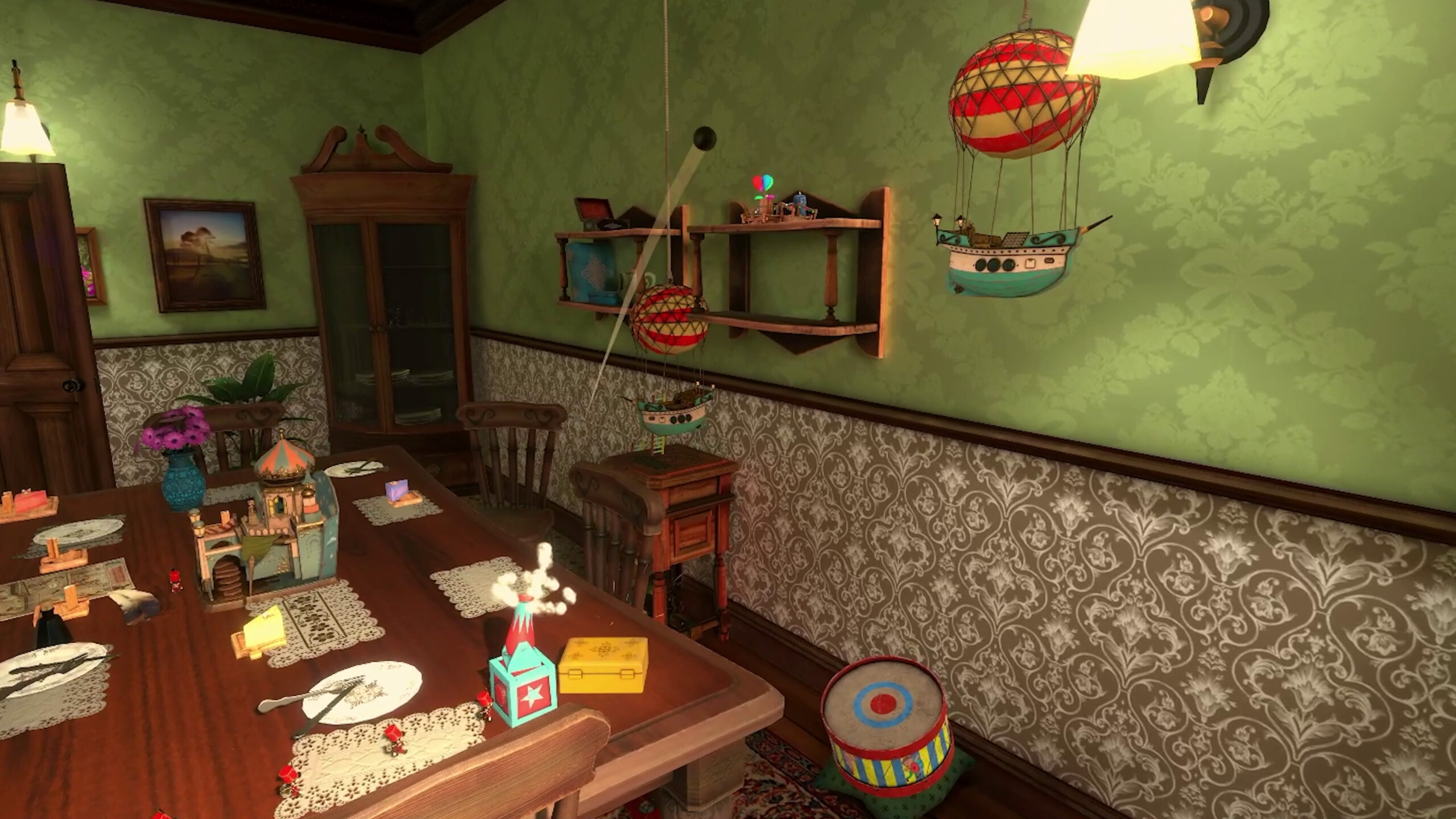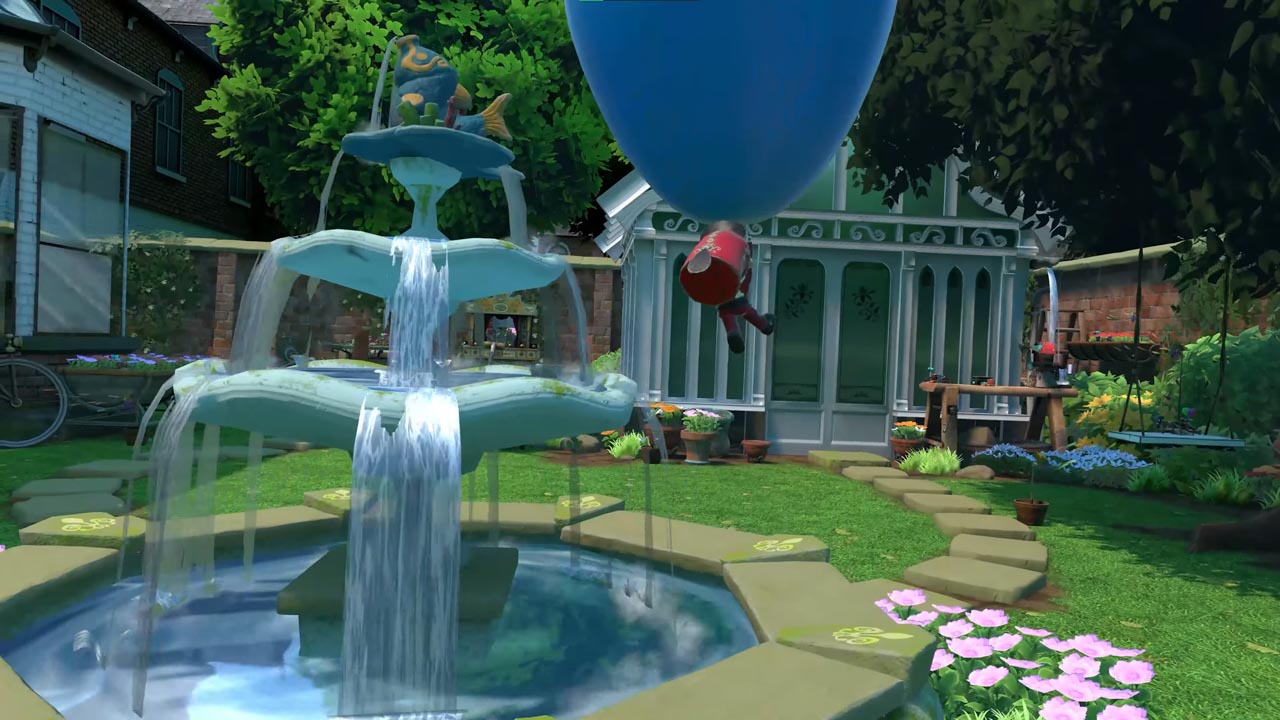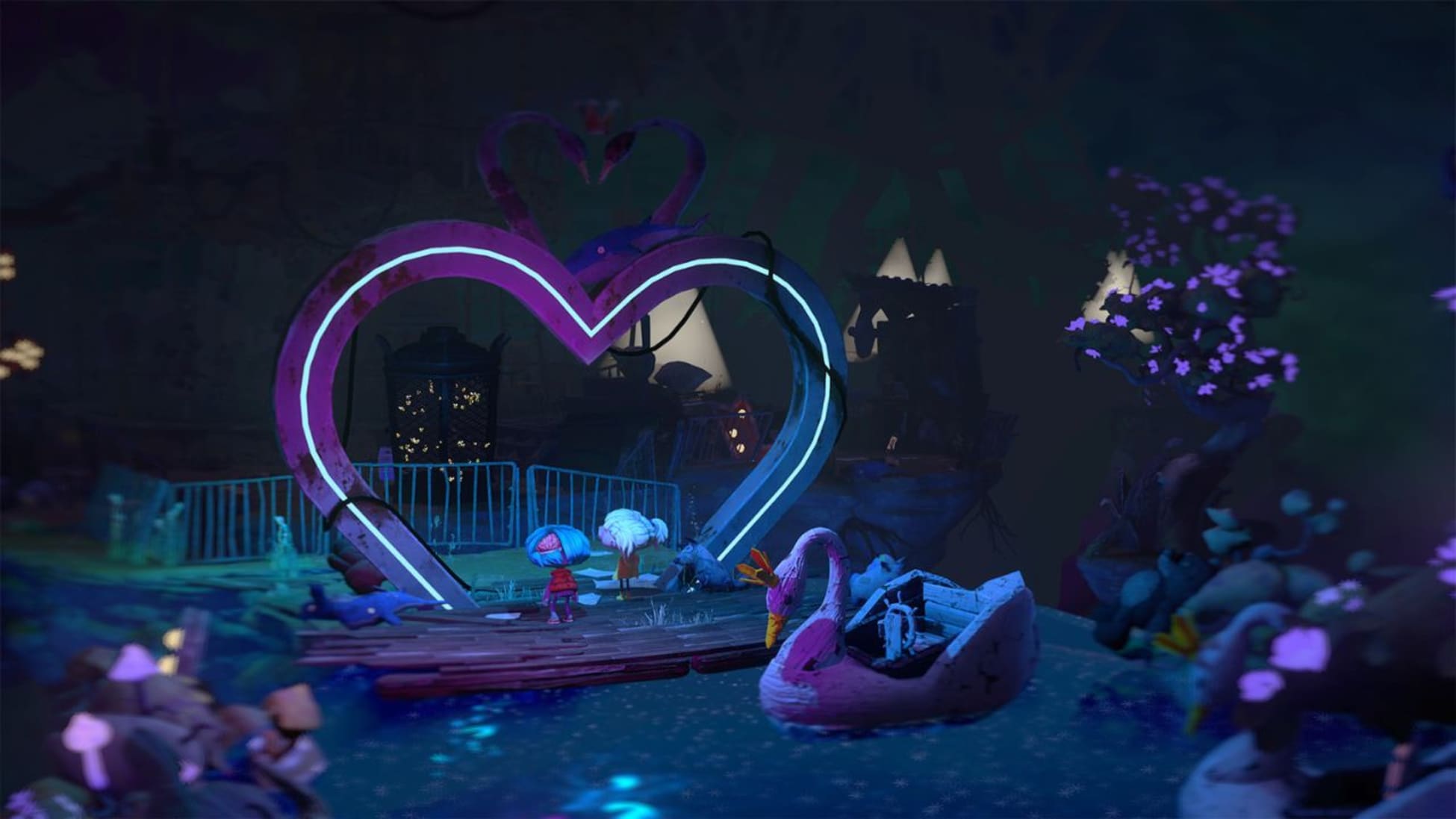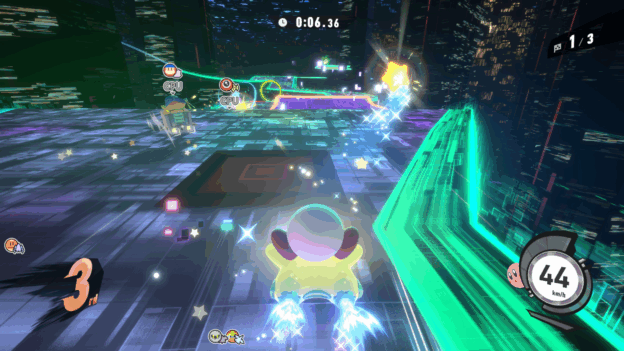Review: Tin Hearts (Nintendo Switch)
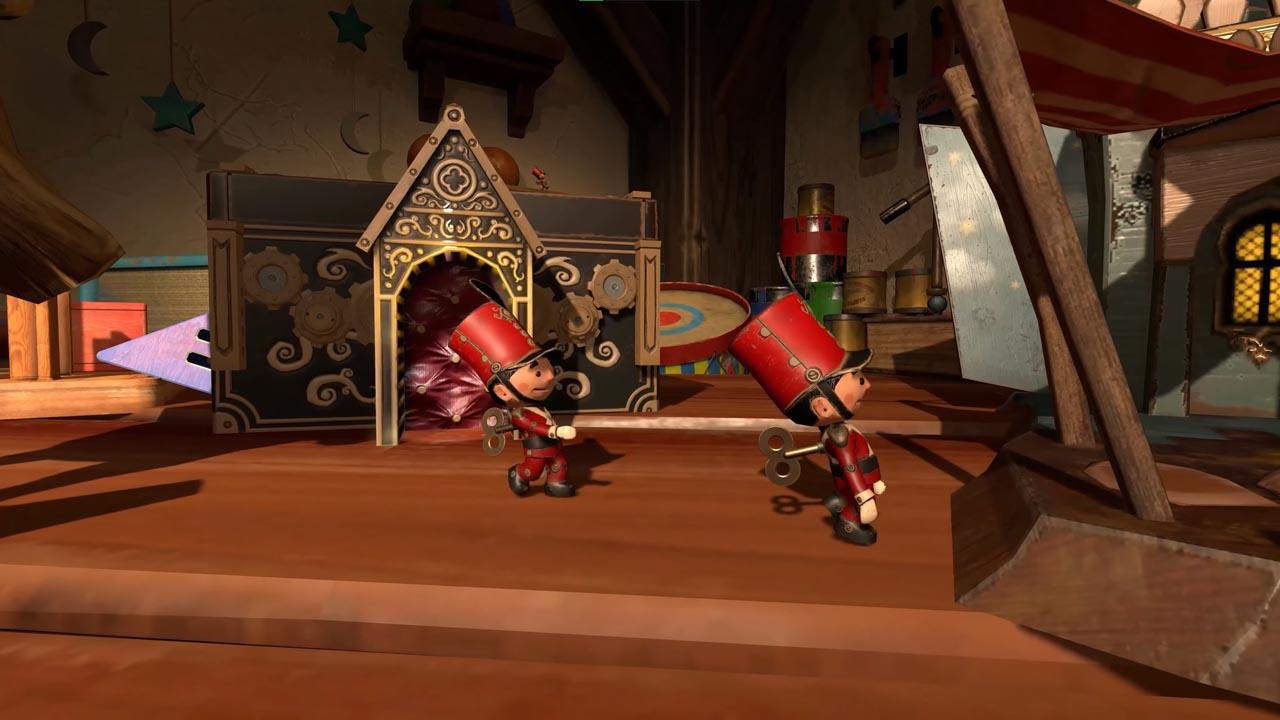
Onward! Onward! Soldier!
For death thou canst not shun.
That line from Hans Christian Andersen’s The Steadfast Tin Soldier always stuck with me. The story’s tin soldier may be steadfast, but dude’s riding a sinking paper boat through the sewer towards the open ocean. He’s assuredly never to see his crush again, and he’s like, “Well, I’m a soldier; dying’s part of the job, bruh.”
Tin soldiers have it rough. And whereas their lot in the puzzle game Tin Hearts isn’t quite as sad, it’s still dangerous. There are no deadly fish or vindictive jacks-in-the-box to contend with (just go read the story—it’s actually quite wonderful), but there are ledges to fall from and shatter. It’s your job to see to it that they don’t.
Tin Hearts sets up numerous environmental puzzles in which you must safely guide a squad of tin soldiers from their box to a predetermined destination.
The soldiers will march in a straight line until encountering an object that deflects them a different way. These objects mostly come in the form of toys scattered around the room, as you’re a toymaker. Or were a toymaker. It’s obvious from the beginning that you’re a ghost who’s slowly able to acquire new abilities to help the tin soldiers reach their goal.
The story here is more than a gimmick to move things along. It’s told alongside the puzzles without really getting in the way, and it gives the gameplay a layer of depth that most puzzle games lack. As you progress through the Victorian setting, you’ll cross through three generations with the toymaker and his family. The balance between the narrative and the puzzles is expertly measured, allowing the game to flow nicely from level to level.
And although the story is an important element, the puzzles are what really matters. There, we have some good and some bad. The good is that they’re clever, they’re long, and there are many of them. Albert (the story’s toy maker) has free reign of the rooms that contain the puzzles, so players have the opportunity to view the path and the obstructions from most angles. Exploring the rooms is required, actually, as you’ll need to find the objects required to alter the path of the soldiers as they march towards their goal. The puzzles are quite clever and inventive, and there’s a real sense of satisfaction each time you get them marching safely along.
The bad is intermixed with this throughout. The freedom of movement may add some depth to the proceedings, but it also muddies the process. Movement is awkward, and the camera doesn’t always cooperate. Sometimes you can walk through objects, sometimes you can’t. And the need to locate pieces across the room unnecessarily complicates matters. You may rack your brain for a while on a certain puzzle only to find out you overlooked a piece hidden at the bottom of a bucket. If you carry a piece across the room before realizing you don’t need it, dropping that piece sends it clear back to its original location on the other side of the room. As a result, you spend too much time walking back and forth when you should be focused on solving puzzles.
I also wrestled throughout the game with orientation. I would have a triangular piece, for example, that would deflect the soldiers at the required 90 degree angle if the game would actually let me set it down the way I want. But it wouldn’t. Instead, I had to find a different piece of the exact same shape to use in a certain location. If there was a way to tell the default orientation of a piece before putting it down, I couldn’t figure it out. So, trial and error became a much bigger part of puzzle solving than it should have been. Gameplay is oddly stuck in a muddy mix up of open-world item use and precise placement, and that muddiness carries over to the awkward controls. A little more snap to object movement, orientation, and placement is sorely needed.
Thankfully, not every design decision gets in the way. The best feature is the ability to rewind your soldiers to a certain point instead of starting a puzzle over from scratch. This is especially a great aid later in the game when you’re plotting their path turn by turn. I also like that new functions become available as toy technology advances throughout the game’s story.
Finally, I’m not in love with the game’s visuals. They feel dated overall, especially the animated characters in the story elements.
Many environmental textures are muddy and pixelated, and tin soldiers themselves never really feel like they’re part of the environment that contains them.
Despite these complaints, I did have fun with Tin Hearts. I attribute this in part to the clever and rewarding puzzles, to the relaxing, low-stakes gameplay, and to the simple fact that it’s fun to play with toys. It’s worth fumbling with the game’s mishaps for the same reason that it’s worth dealing with all the business nonsense of those railroad sims; these are the toys of our childhood, and it’s worthwhile to go back there whenever we can, even virtually.
That, and I’m happy to help provide the soldiers of the world a bit more than a death they canst not shun.

